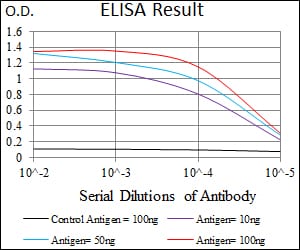
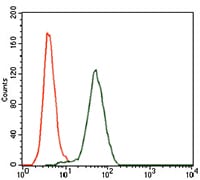
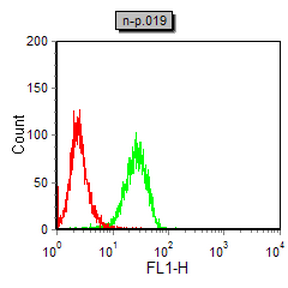
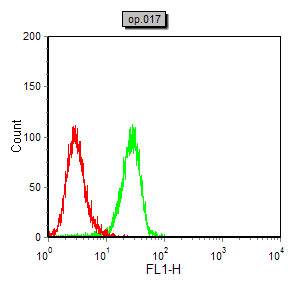
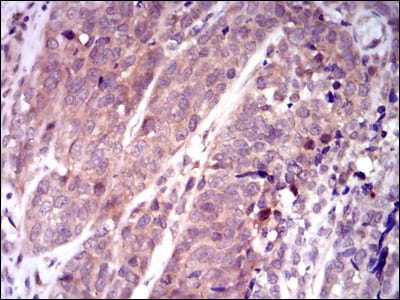
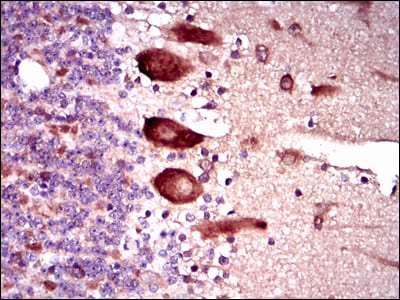
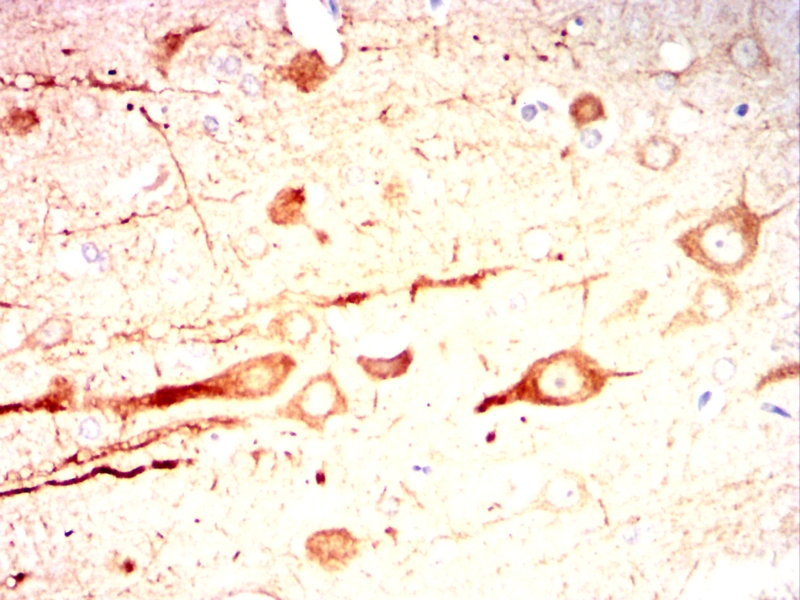
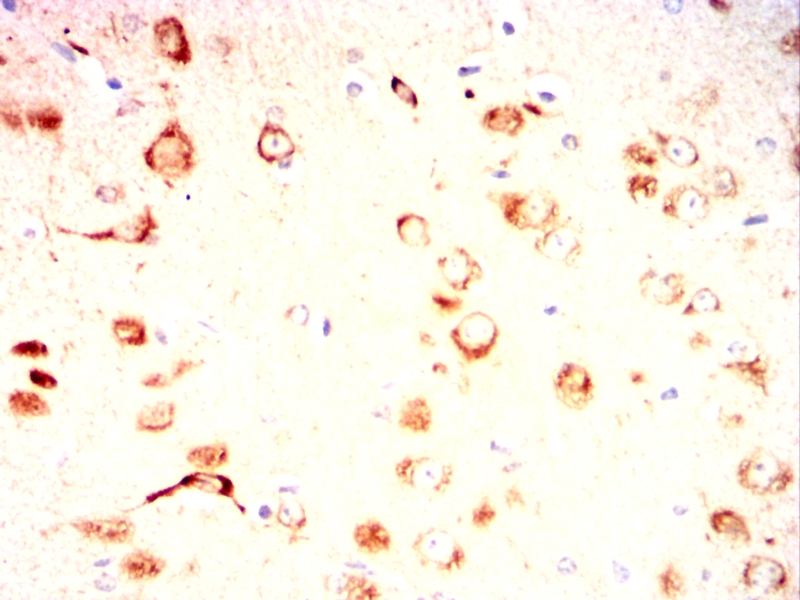
| WB | 咨询技术 | Human,Mouse,Rat |
| IF | 咨询技术 | Human,Mouse,Rat |
| IHC | 1/200 - 1/1000 | Human,Mouse,Rat |
| ICC | 技术咨询 | Human,Mouse,Rat |
| FCM | 1/200 - 1/400 | Human,Mouse,Rat |
| Elisa | 1/10000 | Human,Mouse,Rat |
| Aliases | INrf2; KLHL19 |
| Entrez GeneID | 9817 |
| clone | 7G4B10 |
| WB Predicted band size | 69.7kDa |
| Host/Isotype | Mouse IgG1 |
| Antibody Type | Primary antibody |
| Storage | Store at 4°C short term. Aliquot and store at -20°C long term. Avoid freeze/thaw cycles. |
| Species Reactivity | Human,Mouse,Rat,Rabbit,Monkey |
| Immunogen | Purified recombinant fragment of human KEAP1 (AA: 380-624 ) expressed in E. Coli. |
| Formulation | Purified antibody in PBS with 0.05% sodium azide |
+ +
以下是关于KEAP1抗体的3篇参考文献及其摘要内容:
1. **文献名称**:*"KEAP1 loss modulates sensitivity to kinase targeted therapy in lung cancer"*
**作者**:Singh, A., et al.
**摘要**:该研究利用KEAP1特异性抗体,通过免疫组化和Western blot分析发现,KEAP1缺失或突变的肺癌细胞中NRF2通路持续激活,导致对EGFR抑制剂产生耐药性,提示KEAP1状态可作为靶向治疗反应的生物标志物。
2. **文献名称**:*"Regulation of the NRF2-KEAP1 antioxidant response pathway by autophagy"*
**作者**:Taguchi, K., et al.
**摘要**:作者通过KEAP1抗体检测自噬过程中KEAP1蛋白的降解情况,揭示自噬通过降解KEAP1释放NRF2.增强细胞抗氧化能力,为氧化应激相关疾病(如神经退行性疾病)提供机制解释。
3. **文献名称**:*"KEAP1 mutations in non-small cell lung cancer: A prognostic biomarker for oxidative stress-driven tumorigenesis"*
**作者**:Lynch, J.P., et al.
**摘要**:研究使用KEAP1抗体对患者组织样本进行免疫染色,发现KEAP1突变与NRF2核积累显著相关,且突变患者预后较差,表明KEAP1抗体在肺癌分型及预后评估中的临床应用潜力。
4. **文献名称**:*"Antibody-based detection of KEAP1 conformations reveals redox-dependent structural changes"*
**作者**:Baird, L., & Yamamoto, M.
**摘要**:通过开发针对不同KEAP1构象的特异性抗体,揭示了氧化应激下KEAP1的构象变化如何调控NRF2的释放,为理解KEAP1-NRF2信号动态提供新工具。
这些文献均基于KEAP1抗体的实验应用,涵盖癌症机制、治疗耐药性及抗氧化调控等领域。
The KEAP1 (Kelch-like ECH-associated protein 1) antibody is a critical tool for studying the KEAP1-NRF2 pathway, a central regulatory system mediating cellular defense against oxidative stress and xenobiotic toxicity. KEAP1 functions as a substrate adaptor protein within the Cullin3-based E3 ubiquitin ligase complex, targeting NRF2 (Nuclear factor erythroid 2-related factor 2) for ubiquitination and proteasomal degradation under homeostatic conditions. During oxidative or electrophilic stress, conformational changes in KEAP1 disrupt its interaction with NRF2. allowing NRF2 to accumulate, translocate to the nucleus, and activate cytoprotective gene expression.
KEAP1 antibodies are widely used in research to investigate protein expression, localization, and interactions in diseases linked to KEAP1-NRF2 dysregulation, such as cancer, neurodegenerative disorders, and chronic inflammatory conditions. In cancer biology, KEAP1 mutations or epigenetic silencing are frequently observed in non-small cell lung cancer and other malignancies, leading to constitutive NRF2 activation and chemoresistance. These antibodies enable detection of KEAP1 loss or aberrant expression in clinical samples, aiding in biomarker studies.
Validated in applications like Western blotting, immunohistochemistry, and immunoprecipitation, KEAP1 antibodies typically target specific domains (e.g., Kelch repeats, BTB domain) to assess structural or functional alterations. Researchers must verify antibody specificity due to potential cross-reactivity with homologous proteins. Their utility extends to drug discovery, particularly in evaluating compounds that modulate the KEAP1-NRF2 axis for therapeutic intervention.
×